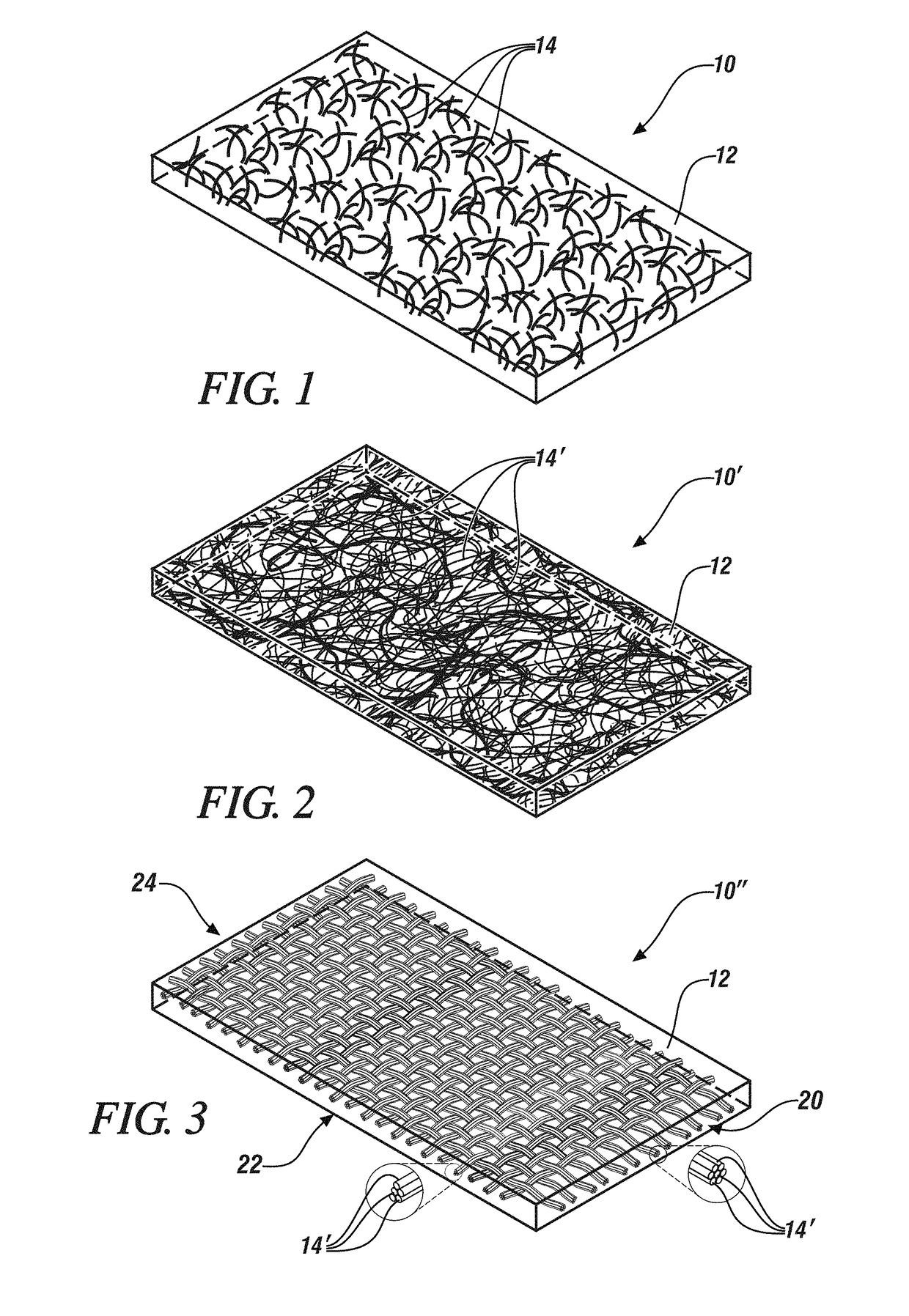Ionically-conductive reinforced glass ceramic separators/solid electrolytes
a technology of ionically-conductive reinforced glass ceramic separators and solid electrolytes, which is applied in the direction of electrochemical generators, cell components, cell component details, etc., can solve the problems of lithium dendrite formation, lithium may be non-uniformly deposited, and the cell capacity is reduced over multiple charge-discharge cycles, so as to improve the durability of electrochemical cells
- Summary
- Abstract
- Description
- Claims
- Application Information
AI Technical Summary
Benefits of technology
Problems solved by technology
Method used
Image
Examples
Embodiment Construction
[0027]Batteries employing cells which employ lithium metal anodes have great potential in applications where high energy density batteries offer performance improvements. Such applications may include, for example, transportation applications such as in electric or hybrid automobiles and trucks, and consumer electronics applications such as in computers and phones.
[0028]Lithium anode batteries, and alkali metal anode batteries generally, typically employ solid electrolytes in the form of a thin sheet. Such solid electrolytes may also serve as a separator, maintaining electrical isolation between the metallic lithium cell anode and, in an embodiment, an NMC (Lithium Nickel Manganese Cobalt Oxide, (LiNixMnyCozO2 where, generally, x+y+z=1)) cathode, while also inhibiting dendritic shorting of cell and thereby inhibiting overheating or thermal runaway of the cell. Exemplary separator / solid electrolyte compositions may include a sulfide or oxysulfide glass or a complex hydride ceramic.
[0...
PUM
| Property | Measurement | Unit |
|---|---|---|
| Fraction | aaaaa | aaaaa |
| Fraction | aaaaa | aaaaa |
| Percent by mass | aaaaa | aaaaa |
Abstract
Description
Claims
Application Information
 Login to View More
Login to View More - R&D
- Intellectual Property
- Life Sciences
- Materials
- Tech Scout
- Unparalleled Data Quality
- Higher Quality Content
- 60% Fewer Hallucinations
Browse by: Latest US Patents, China's latest patents, Technical Efficacy Thesaurus, Application Domain, Technology Topic, Popular Technical Reports.
© 2025 PatSnap. All rights reserved.Legal|Privacy policy|Modern Slavery Act Transparency Statement|Sitemap|About US| Contact US: help@patsnap.com



